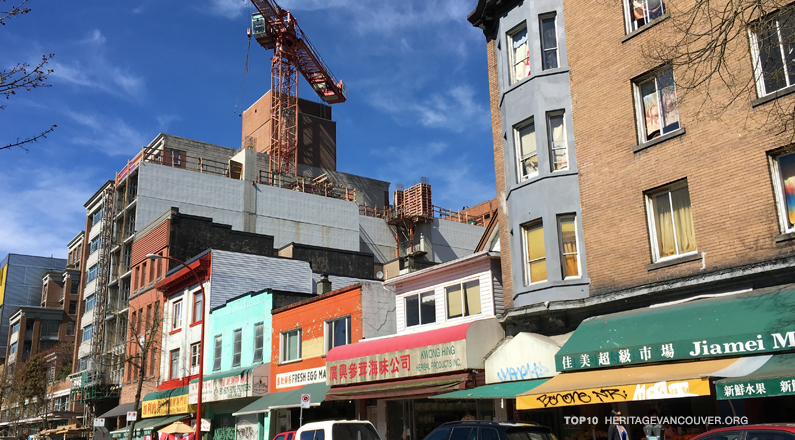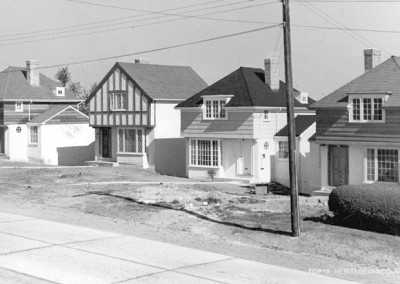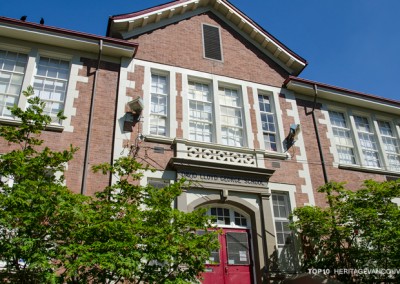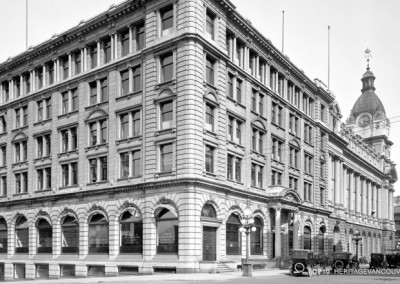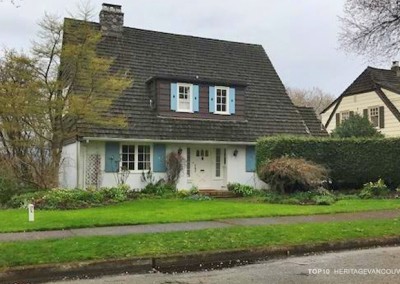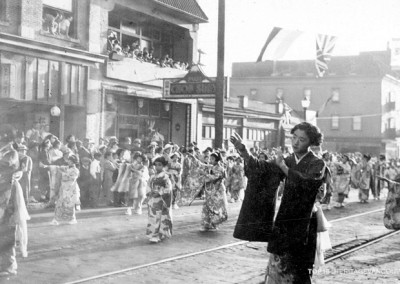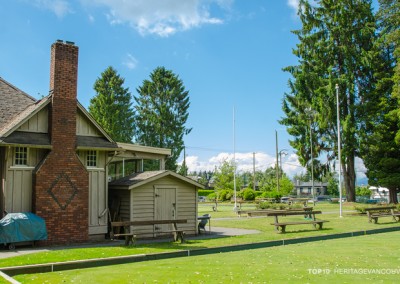Chinatown was on our Watch List in 2016, and the National Trust for Canada Top 10 Endangered Places. Chinatown National Historic Site is a unique urban cultural landscape that is increasingly at risk of losing its unique area character and special cultural / social life due to ongoing development pressures.
New buildings in the neighbourhood are required to meet design guidelines. However, these do not address all of the special features of the area identified in the City’s plans and policies, and that are regarded as important to the community. These features are both tangible and intangible and include: community and cultural activities, a diverse mix of affordable and special needs housing for an aging, low-income population, and opportunities to experience Chinatown’s culture and heritage in daily urban life.
The primary threat to this area is the failure of new development to meet the City’s policies in the Chinatown Plan, and new policies that the City is considering under the Chinatown Revitalization Strategy to allow 200-foot long buildings of up to 10 storeys¹.
While new large buildings may be required to provide some affordable housing, there are major concerns that the housing is not being tied to community services for Chinese-Canadian seniors, and Chinatown’s unique physical, cultural and social attributes will be rapidly destroyed. In addition, most housing will not be affordable, which will lead to rapid socio-economic change in Chinatown and that will quickly force out Chinese-Canadian residents and other low-income households.
It is essential that Chinatown be treated as something well beyond a collection of historic buildings, but rather as a place where traditions, routines, and long-enduring values are expressed and experienced through the continual relationship between tangible and intangible, people and place.
It is imperative that this understanding of heritage be translated into a management strategy with appropriate policy tools so that any development materially enhances this relationship. With the increasing threats to the vulnerable cultural and social fabric of Chinatown, Vancouver is at risk of losing its irreplaceable heritage.
Threat
What is the threat to Chinatown?
Chinatown continues to be an area of high interest for development. The current proposal for 105 Keefer Street³, revised twice in the last year, continues to be strongly opposed by the community, largely due to the building’s inappropriate size and scale and a housing mix that will not address the needs of Chinese seniors or other low-income residents.
A preliminary concept was recently released in February for another large development at 728-796 Main Street, including the Brickhouse, Creekside and Jimi Hendrix Shrine buildings, and an application to develop 129 Keefer Street is also currently underway.
None of the proposed developments will support the special characteristics of the area as understood by many in the community and as identified in the Chinatown Plan.
These characteristics include:
- Unique neighbourhood character;
- Intergenerational programming;
- Community and cultural activities;
- Diverse housing mix for affordability and an aging population; and
- Authentic experiences of Chinatown’s culture and heritage in urban life.
The primary threat to this area is the failure of new development to meet the City’s policies in the Chinatown Plan and new policies that the City is considering under the Chinatown Revitalization Strategy to allow 200-foot long buildings of up to 10 storeys [4]. While new large buildings may be required to provide some affordable housing, there are major concerns that the housing is not being tied to community services for Chinese-Canadian seniors and Chinatown’s unique physical, cultural and social attributes will be rapidly destroyed.
Most new housing will not be affordable, and this will lead to socio-economic change in Chinatown that will quickly force out Chinese and other low-income residents. Places where community members feel welcome are already dwindling, and demographic-specific businesses are unable to remain due to increased rent and demolitions.
It is imperative for planning policies and tools to go significantly beyond aesthetic values by addressing the area as a whole, and connect buildings and spaces to people, social customs and daily rituals in the built environment. UNESCO uses the term “Cultural Landscape” for this approach to heritage districts.
Significance
Why is Chinatown significant?
Chinatown is divided into two Historic Area Districts. The HA-1 district stretching from Gore to Taylor along Pender Street was formally recognized as a National Historic Site (NHS) in 2011. There are 33 heritage buildings in the HA-1/NHS with distinctive architecture that blends Chinese regional and western styles and has special features (e.g. recessed balconies, mezzanines and interior courtyards).
Chinatown outside the NHS is the HA-1A district, and includes the concentration of Benevolent Society buildings that served as community support centres for the establishment of Chinatown.
It is important to recognize Chinatown as a whole (HA-1/NHS and HA-1A) as an urban cultural landscape. The entire area is nationally significant for its association with the struggles of Chinese Canadians throughout their longstanding settlement in Canada.
Early Vancouver was a major port of entry for Chinese immigrants who settled in Chinatown, and created one of the first communities in our city. Many were labourers but others were entrepreneurs, and they established Chinatown as an ethnic shopping district. However, due to racism that Chinese-Canadians faced prior to World War II, Chinatown began as a self-contained enclave with a theatre, schools, a hospital and clan associations. Postwar there was a great increase in Chinese immigration, and Vancouver’s Chinatown grew to become one of the largest in North America.
This area provided a backdrop for the struggle to establish a community in the late 19th century, the fight for voting rights and citizenship the starting in 1923, the battle against freeway construction and urban renewal in the 1960s and 70s, and the fight against a ban on BBQ meats. Over time Chinatown has become a symbol of resilience, diversity, struggle and perseverance. To this day, it is a neighbourhood with a very strong sense of place linked to its unique history, intact cultural fabric and active community.
Chinatown is presently home to large numbers of low-income residents and seniors who are mostly Chinese-Canadian. It is a relatively affordable neighbourhood with much rental housing stock, and acts as a hub for social, cultural and community activities with major public spaces, e.g. Sun Yat Sen Gardens.
Established residents in Chinatown are reliant on the area’s shops and services. As more local ‘mom and pop’ shops are closing for a variety of reasons, people are finding it more difficult to buy food and access services, which are culturally specific to them. People living in other Downtown Eastside areas also rely on the affordability of Chinatown shops to meet daily needs.
Many Vancouverites feel that the social and cultural diversity of Chinatown is important to retain for the collective identity and well being of our city. In the words of UNESCO “…cultural diversity is as necessary for humankind as biodiversity is for nature. In this sense, it is the common heritage of humanity and should be recognized and affirmed for the benefit of present and future generations.”
Position
Heritage Vancouver’s position
Chinatown is an important neighbourhood that reflects Vancouver’s history and heritage through continual interactions between culture and place in day-to-day life. New infill is occurring rapidly and it is critical that changes to the area be managed in ways that respect the cultural as well as the physical characteristics of the area.
Chinatown has been the focus of significant City of Vancouver planning efforts, and most, if not all, of these initiatives recognize that not only the physical but also the intangible qualities are important and in need of protection:
This is a critical moment in the evolution of Chinatown to ensure revitalization continues, is socially and economically sustainable, and maintains and renews the cultural and heritage fabric of the neighbourhood.
(Chinatown Neighbourhood Plan and Economic Revitalization Strategy 2012)
We believe that the City should:
- Expand heritage conservation tools, beyond zoning and design guidelines, to protect the cultural and physical characteristics of Chinatown.
- Work with the community to secure funding for preservation and rehabilitation of Society buildings under the Chinese Society Legacy Program.
- Update the existing Statement of Significance (SOS) for Chinatown to fully capture its significance as a cultural landscape, including social and cultural practices as character defining elements.
- Revise planning policies and tools for Chinatown to provide direction for rezoning and design proposals to safeguard the tangible and intangible character-defining elements of the area as a whole as identified in the SOS, and not focus on each individual site.
- Develop and implement a sensitive and thoughtful approach to urban regeneration that goes beyond drawing more residents and new businesses to Chinatown. Economic revitalization is only one aspect of regeneration and must be tied to social development for the benefit of everyone, including the local community.
- Act on the Downtown Eastside Plan policy for a better public awareness of “the history, and the rich physical, social and cultural heritage” of Chinatown.
- Work with the Chinatown and Downtown Eastside communities to find creative ways to help established local business owners and community organizations, including grants and other support programs and policies.
- Find and implement concrete and actionable solutions to meet the Social Impact Objectives as identified in the Downtown Eastside Plan.
Actions
What you can do
We strongly encourage the citizens of Vancouver to:
- Support small local ‘mom-and-pop’ businesses in Chinatown.
- Participate in public programming in Chinatown (e.g. mah-jong socials, talks, tours led by seniors and exhibits at Sun Yat Sen Gardens).
- Let the City know that you are interested in learning more about the broader heritage values in Chinatown.
- Let the City know that you value Chinatown as a cultural landscape that melds together culture and place and want them to take actions to protect the tangible (physical) and intangible (cultural) heritage of Chinatown.
Resources
UNESCO, Universal Declaration on Cultural Diversity, article 1, 2001.
UNESCO, Historic Urban Landscape.
[1] Since the time of writing, although not decided on by Council, there have been indications by City staff that these types of lot consolidations will not go forward and that the rezoning policy for Chinatown South may be canceled. See http://vancouver.ca/files/cov/chinatown-development-policy-changes-progress-update-english.pdf
[2] There have been new developments in how the City will potentially address development and heritage issues in Chinatown – please see notes below. At this point, while there are merits, these potential changes to policy do not significantly affect our assessment of the threat to Chinatown.
[3] The rezoning for 105 Keefer was voted down by Council on June 13, 2017. As of this update on June 14, what will happen with the site is still to be determined.
[4] Since the time of writing, although not decided on by Council, there have been indications by City staff that these types of lot consolidations will not go forward and that the rezoning policy for Chinatown South may be canceled. See http://vancouver.ca/files/cov/chinatown-development-policy-changes-progress-update-english.pdf
